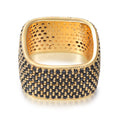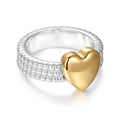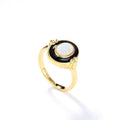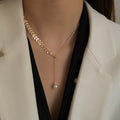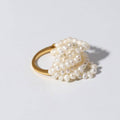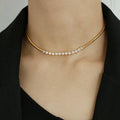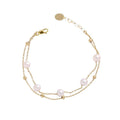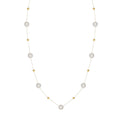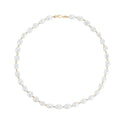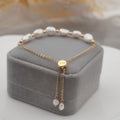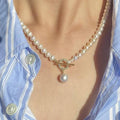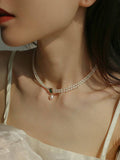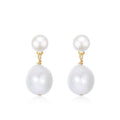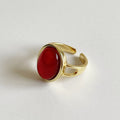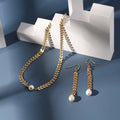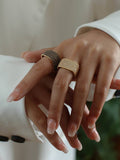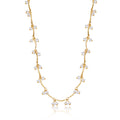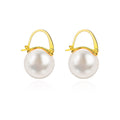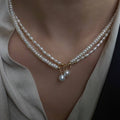How To Tell Swarovski Pearls From Freshwater Pearls?
Posted by ZAFARI STUDIO
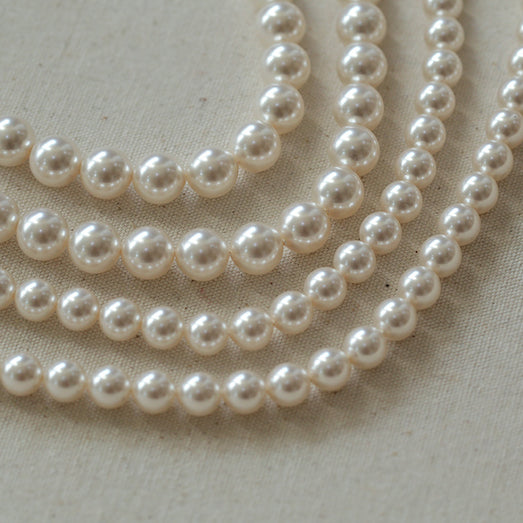
Pearls are timeless and elegant, but not all pearls are created equal. Among the most popular types are Swarovski pearls and freshwater pearls, each with unique characteristics and qualities. Understanding how to distinguish between these two can help you make informed choices when buying jewelry. In this article, we’ll explore the key differences in appearance, durability, and value to help you easily tell Swarovski pearls from freshwater pearls.
What Are Swarovski Pearls?
Swarovski pearls aren’t real pearls but super nice fake ones. They’re made by coating glass beads with special materials that give them a shiny, pearl-like look. They’re smooth, round, and always look bright and beautiful. Because they’re made carefully, they’re strong and great for everyday jewelry if you want that pearl style without spending a lot.

What Are Freshwater Pearls?
Freshwater pearls are real pearls that grow inside freshwater mussels, usually in lakes and rivers. They come in lots of different shapes and sizes, and each one is unique. They have a natural shine and feel a bit softer than some other pearls. Freshwater pearls are popular because they look beautiful and are more affordable than saltwater pearls.
Key Differences Between Swarovski and Freshwater Pearls
Appearance and Luster
Freshwater pearls have a natural, soft glow that varies with each pearl’s unique shape and size. They can be round, oval, or irregular, giving them a distinct, organic look. Swarovski pearls, however, are perfectly round with a bright, glass-like sparkle because they’re made by coating glass beads. This makes Swarovski pearls look very uniform and shiny compared to the more natural appearance of freshwater pearls.
Durability and Quality
Swarovski pearls are quite durable since they’re made from glass and have protective coatings that resist scratches and damage. Freshwater pearls are natural and softer, so they require more care to avoid scratches or wear. In terms of quality, freshwater pearls are valued for their genuine origin and natural beauty, while Swarovski pearls are appreciated for their flawless shape and brilliant shine.
Price
Freshwater pearls generally cost more because they are natural and take time to form inside mussels. Their unique shapes and authentic luster add to their value. Swarovski pearls are more budget-friendly since they are man-made and easier to produce in large quantities. So, if you want genuine pearls, expect a higher price, but if you want a perfect, shiny look at a lower cost, Swarovski pearls are a great choice.
How to Identify Swarovski Pearls
Swarovski pearls are easy to spot once you know what to look for. First, they’re perfectly round—every pearl is the same size and shape. They also have a very smooth surface with no bumps or irregularities. The shine is bright and glassy, almost too perfect to be natural. If you tap them lightly, they may feel a bit cool and heavier than real pearls because they’re made of glass. Plus, if you bought them from a known brand or they come with Swarovski packaging, that’s a strong sign they’re Swarovski pearls.
How to Identify Freshwater Pearls
Freshwater pearls usually have a natural, soft glow instead of a super shiny or glassy look. They often come in slightly different shapes and sizes, so don’t expect every pearl to be perfectly round. You might also see tiny surface marks or irregularities—that’s totally normal and actually a sign they’re real. If you gently rub two pearls together, real freshwater pearls will feel a little gritty, while fake ones feel smooth. They also tend to be lighter than glass pearls like Swarovski ones.

Common Uses for Swarovski vs. Freshwater Pearls
Swarovski pearls are often used in fashion jewelry, like trendy necklaces, bracelets, and earrings. Because they’re affordable and perfectly uniform, they’re great for costume jewelry, bridal accessories, and DIY projects where you want a polished, high-shine look without the high cost. Freshwater pearls, on the other hand, are more popular in fine jewelry. You’ll often see them in classic pearl necklaces, elegant earrings, and timeless bracelets. Their natural beauty and unique shapes make them perfect for more sophisticated or meaningful pieces, like gifts or keepsakes.



